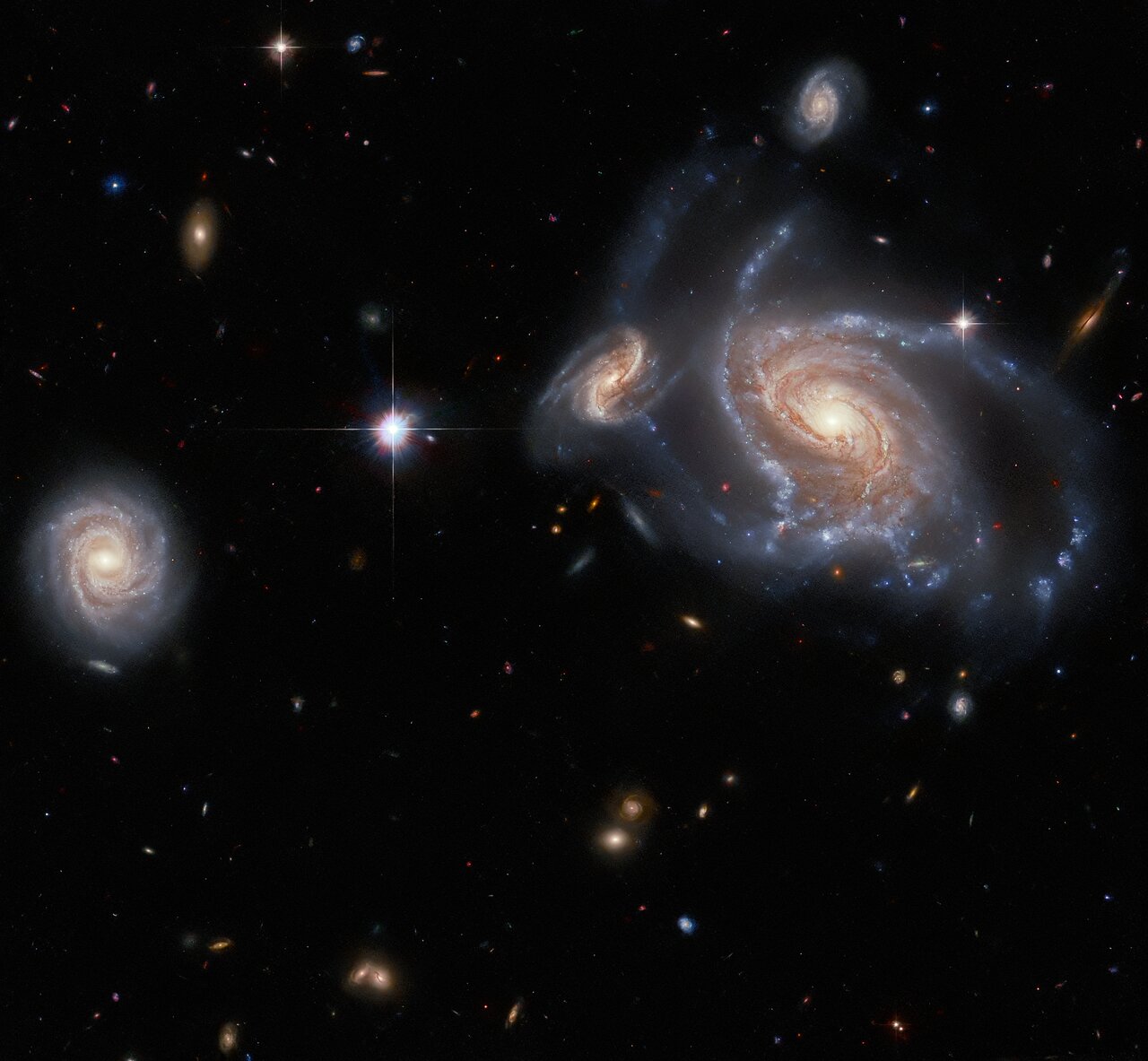

This image from the NASA/ESA Hubble Space Telescope features a richness of spiral galaxies: the large, prominent spiral galaxy on the right side of the image is NGC 1356; the two apparently smaller spiral galaxies flanking it are LEDA 467699 (above it) and LEDA 95415 (very close at its left) respectively; and finally, IC 1947 sits along the left side of the image.
This image is a really interesting example of how challenging it can be to tell whether two galaxies are actually close together, or just seem to be from our perspective here on Earth. A quick glance at this image would likely lead you to think that NGC 1356, LEDA 467699, and LEDA 95415 were all close companions, while IC 1947 was more remote. However, we have to remember that two-dimensional images such as this one only give an indication of angular separation: that is, how objects are spread across the sphere of the night sky. What they cannot represent is the distance objects are from Earth.
For instance, while NGC 1356 and LEDA 95415 appear to be so close that they must surely be interacting, the former is about 550 million light-years from Earth and the latter is roughly 840 million light-years away, so there is nearly a whopping 300 million light-year separation between them. That also means that LEDA 95415 is likely nowhere near as much smaller than NGC 1356 as it appears to be.
On the other hand, while NGC 1356 and IC 1947 seem to be separated by a relative gulf in this image, IC 1947 is only about 500 million light-years from Earth. The angular distance apparent between them in this image only works out to less than 400,000 light-years, so they are actually much closer neighbors in three-dimensional space than NGC 1356 and LEDA 95415!
Text credit: European Space Agency
Media Contact:
Claire Andreoli
NASA’s Goddard Space Flight Center, Greenbelt, MD
[email protected]








